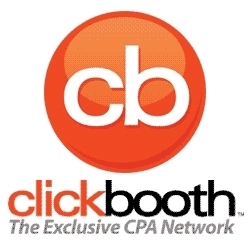Between 2004 and 2009, I focused almost completely on display advertising, buying media and converting it into cash through arbitraging CPA ads. Even when I started my own display network, almost half of my time was spent personally managing these campaigns to ensure that they worked. I’ve written briefly about this in the past, and have shared a few “secrets” to making these ads worked – and have trained half a dozen managers of display networks plus even help build another network in the last few years. I felt it was to really put down my thoughts and some ideas that are a must in managing display campaigns.
Perhaps the best way to give the tips is to explain how each campaign converted and move from there.
My first successful CPA campaign was actually around the year 2000. At the time I bought 300×250 POPS, arbitraging a CPA campaign for NextCard. If you didn’t know, NextCard was the first credit card issuer that was online, offered instant approval. I forgot thee exact CPA they paid, but it was in the $75 dollar range per approval, and we learned within a day if they were approved. There was no pixels, no way to optimize.
The popups were simple- – I wish I had screenshots of them. They basically popped up what looked like an error window and it said “Your Credit Card is Charging you Too Much Interest.” The Click-rate on these was in the 5-10% range, sometimes higher. Needless to say, we had huge conversions in 2000 and within a few months were bringing in millions of dollars.
The bad news was that NextCard was eventually shut down by the FDIC and ended up owning my partner and me at the time, also millions of dollars. Soon after, 9/11 happened…
New Ideas
The key is that you should always try new things.
Popups were new, and this format of an error window had never been used before – and some people are still trying to copy this idea. Since it was new, it had huge click-through, and huge response rates.
The second huge success for me in CPA advertising on display ads was free ipod offers or what we now call ZIP and EMAIL submit offers. Those came huge around 2003 and 2004, and I started to develop animated banners that got people attention. You probably remember a bunch of them: hit the monkey, shoot the gorilla, you name it—we created banners for all sorts of audiences. I had aliens, monsters, vampires — you killed them, shot them, hit them over the head and even occasionally fed them. Flash games were just coming “in” and thus these were huge.
The companies that did these type of are almost all still around, still pushing these offers.
At the time, while people were writing about free ipod banners, no one had yet seen all of these action-type flash banners. Because it was new, people clicked on those banners like crazy and they received huge click-through also. It was new, it was fresh, and it made money.
I was also very fortunate at the time, FastClick now part of ValueClick took interest in what I was doing, and allowed me to buy a ridiculous amount of media on their networks on credit. Thanks to Jeremy Olsson, the sales manager who helped manage the campaign, I quickly became the top advertiser on FastClick. FastClick allowed me to take 25% off the top of what I made, and they took the rest – and sometimes at $20k a day in revenue, I quickly started rolling in the dough, making often $5k a day profit.
I took the money that I made and started to buy on other networks, all of them, using the same model, the same banners.
Soon after people started copying these banners left and right, often just stealing the code – I found “major” CPM networks just ripping them off, often even with my logo still attached to them. One CPA Network that I was working with at the time (and still around) even went as far to start giving my banners to other affiliates with small changes.
This model however lasted for years for me, and I was able to make tens of millions off of “Free ipod” banners. Why? Because I was the first person to do it, the first person to push it and even when others were doing it, I always had the upper hand.
The third major success in CPA arbitrage that I had was in dating banners. in 2006 I had started my new display network, so I had a great deal of inventory automatically at my disposal. We bought tons of inventory from websites and other networks at a set CPM and it was important for us to fill that inventory.
Dating ads turned out to be the way to fill this inventory.
Push the Envelope
The easiest advertisement to get clicks on were what I would call “sexy” ads. Simply put, we’d put pictures of cute girls and have those ads move up and down, side to side. Everyone was trying flashy, ultra-sexy photos in their dating ads, but these worked better. Photos that looked from a webcam, of “real” girls received tons more clicks than the ads that the dating companies provided. We’d make the ad move a little bit after a second or two, shake it, and it would get people’s attention.
The other type of advertisement that worked was the fake video ads. We’d embed a video into the flash, but make it loop. It was actually only a few second of video, but no one noticed –they’d see the 21-year-old girl in a short shirt dancing in front of the video. Add some buttons to the site like “Chat” and people were clicking those like crazy. Blurry video actually worked better than crisp video.
We always added description in all the banners, to try to hit target audiences. Things like “Chelsea, 21 years-old, looking for a man to take care of her” worked wonders. It implied things that maybe some older man was interested in, but also weren’t sleazy enough to get filtered by the networks.
Did I forget, many of the new dating networks, were looking for traffic from all countries. We signed up thousands of people in Saudi Arabia who loved large black women (no joke!) by having simple pictures of a large chick in a bikini who was “looking for a dark man from another country.”
Eventually the networks started cracking down on these ads, and started considering them too explicit. On top, the porn industry started copying them, and then not soon after the porn-tubes became huge using very similar models.
We were the first people to do these, so they worked. We pushed new ideas, tried new models, and then went with what worked. What I didn’t mention was that while I had multi-million dollar successes, I had at least 200 other types of creative and campaigns that didn’t work. We tried everything possible to make things work, played with so many different ideas until something stuck and then went all out with it.
That needs to be your focus when trying CPA advertising on networks: try many, many different ideas and go all out in making those ideas work. Nothing ever works overnight, and more importantly even the successful ideas often require tweaking and targeting that takes time and money.
Pay Attention
The other part required was enormous amount of monitoring the campaigns. One little slip-up could take a campaign from successful to a complete disaster. From the start the email and zip submit companies have ALWAYS been cheating affiliates – removing leads left and right. This required us to monitor campaigns and notice those discrepancies and make it clear we’d stop bringing 20,000 leads a day and move to another company if they continued. These companies still exist, still play the same games and try to cheat the affiliates to make more profit.
Even when the companies were not trying to cheat me, they often didn’t pay attention to what was going on with their own website. When you are sending hundreds of thousands of visitors to a website per day, you can often affect the speed of the server. When the site is slow, conversions go down. When conversions go down, a campaign making you 25% profit suddenly becomes a loss. This required constant calling of people on their cell phone, making it clear things needed to be changed, that servers were working full speed… and then often asking for credit when their site crashed for loss conversions.
Again, pay attention to ever little detail – it makes a difference.
Trusted Networks
Working with a trusted affiliate CPA Network will make a huge difference also. If you are working with some network that is brokering from some other network, who took it from another network, this model will never work. You need a network that has a direct contact with the advertiser and a great relationship with the advertiser. That ensures that when something does go wrong, it will be fixed immediately. It also means that network has leverage and pull to make needed changes.
That is perhaps the best part to remember. If you are working with some crappy network out of China, some guy running it out of his mommy’s basement, there is no guarantee you’ll get paid when the money starts rolling in. They have no relationship with the advertisers, have no idea what is going on, so they will not back you up when things do go wrong. Things always go wrong. Again, things ALWAYS go wrong, and you need someone there to take care of you when they do.





















